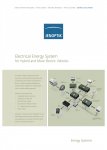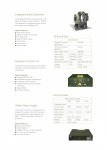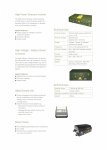Hi
gatsma,
thjakits,
graynomad,
thjakits, you described my agenda perfectly:
I think Bio wants to take a new tack on high end Overlanders - with lots of amenities and toys and possibly a "Toy Store" in tow....
That, actually,
is the central objective. And you are right on track with the "Base Camp" idea.
***********************************************
I will illustrate the issue by asking a question, put generically, to anyone reading this: Do you think that retired couples who travel around the United States or Europe, "full-timing" in their large "Class A" or German "Liner" motorhomes, are engaged in "camping"? Is their central objective finding out-of-the-way places that only small vehicles can reach? This may be hard for many ExPo participants to understand, but lots of people actually
like RV parks. And they actually
like the "RV park lifestyle". Their objective is
not to seek maximum solitude in a small vehicle in the middle of nowhere. Sometimes they will even stay in hotels, and visit the centers of cities. They just want to be able to drive from one city to the next, in their mobile home.
Furthermore, in Europe, there are plenty of RV parks located on city outskirts, with good public transportation that takes one into the city center.
My guess is that these same people would like to continue their "RV lifestyle" beyond Europe and North America, if they could. And as such, it's not necessarily remote beaches or empty landscapes that motivates them to travel. Some people really do want to travel because they want contact with other cultures, and other peoples. They want to meet interesting
people; they don't want to meet interesting trees. And so for them, having an RV is not really
about camping in remote places at all. It's about something rather different.
Analogously, traveling the world in a bad-road capable RV would be something different. For instance, such people would not want to travel China because they crave solitary mountain landscapes, although China does have these. Rather, they would probably want to travel China because of the culture, the history, the Art, and contact with a different way of life.
***********************************************
So I have been thinking of the TerraLiner as basically a German Liner or American Class-A motorhome that can actually leave the confines of North America and Europe. The intended "market demographic" of the TerraLiner is the same people who might buy an American luxury motorhome such as a Newell, Liberty, Millennium, or Marathon Coach. Yes, such people might want to do
some "camping" and
some "boon-docking". But boondocking full-time is not their central objective. They are not looking for a vehicle that will allow them to stay mobile living continuously in wilderness areas, for years on end, as far away from other people as possible.
Yes, I have been saying that the TerraLiner should be able to boon-dock for at least 2 weeks. But this is also a convenience thing: nobody wants to have to go shopping every two or three days, or even every week.
As such, my "target market" is
not current overlanders who want to travel the world by motorbike, SUV, or small Unimog, gaining access to very remote places thereby, because their vehicles are so small.
In transportation design it's always important to remember that there are lots of different kinds of vehicles, that serve a wide variety of purposes. And amongst vehicles classified as "RVs", here too there is a wide range range of different types, serving very different "mission profiles". Even within the smaller sub-class called "van conversions", the range of uses to which people put vans, and their corresponding priorities, are incredibly diverse. But many people seem to mistakenly imagine that their own personal preferred "mission profile" for an RV, should be
the one and only universal mission profile. That everyone should want to use an "expedition RV" (also a
very broad category), to do exactly the same kinds of things that they would want to do.
It seems hard to hear this, perhaps because stating this amounts to reminding people of their own particularity. It amounts to reminding people of the "non-universal" nature of their desires, needs, income, etc. etc. As human beings it's always very hard to resist wanting to universalize from our own particular situations. It's hard to resist the urge to think of our own case as universally normative, as the standard against which everything and everyone else should be judged. And that general human urge is just as present on a forum like ExPo, as it is everywhere else.
***********************************************
So the way to think about the TerraLiner is this. Does there exist a market for large, 45-foot long, 13.7 m Class-A American luxury motorhomes? The answer to this question is obviously "yes". So too, does there exist a market for large, 9 - 12 m German "Liner" class motorhomes? Again, the answer here is "yes".
Now might these same people enjoy taking the same kind of vehicle, but a bit smaller (9 - 10 m), on a voyage around the world? Again, I think the answer is pretty clear: yes, they would. Would they prefer to do their around-the-world trip in a motorhome that more nearly resembles the Class A or Liner motorhome that they owned for a few years, while still in North American or Europe? Here too, I think the answer is "yes". If they could get a fully integrated design, with space-expanding slide-outs and/or pop-ups, just like current American Class A's, that's what they would prefer. They would prefer such a vehicle over most of the vehicles sold by UniCat or ActionMobil, vehicles that are
not fully integrated, and that do not have big slide-outs. But of course, to negotiate bad-roads, such a vehicle needs a much better drive-train and chassis than a typical Class A or German Liner. The TerraLiner needs to be able to travel bad-roads in Second-World countries, or bad roads in more wilderness areas, such as the various tracks in Australia.
It's really a very simple idea, and it's not that complicated. Just imagine a 10 m Winnebago that really
could drive around the world. A Winnebago that's not confined to North America, and that's not confined to just "good roads". A Winnebago that can also travel bad roads, but not necessarily much off-road. Or a 10 m Concorde "Liner", again, that can do the same.
***********************************************
Now the water-toys and coastal exploration thing is really just my own particular pet preference. But as you correctly suggest,
graynomad, I should be designing something more "generic", and in fact I have been doing just this, so far. You are right: not everyone wants to surf or kayak. In fact, the market demographic that I am thinking of probably won't want to. But of course when engaging in a design project of this sort, there is always a strong temptation to inject a bit of one's own fantasy and whimsy into the thing. If I personally had the money to build a TerraLiner, my particular "mission profile" would probably be a bit different than the "mission profile" of the typical retired couple who just wants to drive around the world in comfort, in a Winnebago-sized fully integrated motorhome.
Personally speaking, I would want to do exactly what I just described: circumnavigate continents, surfing or kayaking along the way. But also crossing Tibet, and driving the Andes. So I guess I got just a bit carried away for a moment, failing to distinguish between my own personal preferences and fantasies, and a realistic appraisal of the potential market demographic for the TerraLiner.
Again, as a design project,
graynomad you are right: I need to keep the TerraLiner generic. My personal ideal TerraLiner would be a coastal exploration TerraLiner. But as a transportation designer, one does not get to design what one personally wants. Rather, one has to design for a client, or a given projected market. There is at least this much to be said for Hamid Bekradi's OEX-B: he had a very specific "target market" in mind. Bekradi imagined himself designing a futuristic version of the kinds of vehicles already used by commercial overlanding companies such
Dragoman,
Odyssey,
Oasis, etc. Bekradi clearly did not design the OEX-B for himself. Rather, he designed it for a potential market. Whether his OEX-B actually "speaks" to this market, practically and aesthetically, is another story. But at least Bekradi had his target clear. See post #972 and following, at
http://www.expeditionportal.com/for...pedition-RV-w-Rigid-Torsion-Free-Frame/page98 .
In short, thanks for the critical feedback. I guess I just carried away for a moment, failing to distinguish between the ideal TerraLiner of my own fantasies (a coastal exploration vehicle), versus the TerraLiner whose market demographic I just described. I
personally have surf-boards and windsurfers on the brain, I love Casa Azul, and yes, I love VW Kombi hippie buses and surf vans, painted with flowers (more about them later.....:sombrero

. But I have to stick to the design parameters (10 m or less), and the target demographic.
gatsma, I hope that the somewhat frustrated, grudgingly disappointed red-heat of my "re-entry" is warming you up, as you read this post......:coffeedrink:
... But you are dead right: the spaceship has gotta return to earth. Many thanks for the critical feedback: it was needed.
All best wishes,
Biotect
Addendum:
But before I get completely self-disciplined, and make a concerted effort to block my fantasy life from infecting the design process........ I just have a quick question for
thjakits: why couldn't a big vehicle serve as a "Surf Base Camp" towing a trailer that has a smaller vehicle (for instance, a small Jeep Jeep Rubicon, about 4.2 m long); but a Jeep that can still transport surfboards and/or kayaks, up on top? See
http://www.jeep.co.uk/wrangler/ ,
http://www.jeep.co.uk/wrangler/models/ ,
https://www.jeep.com/assets/pdf/wrangler_specs.pdf , and
http://www.roadandtrack.com/new-car...eep-wrangler-rubicon-x-is-freakishly-capable/ :







That way one could explore a given stretch of coast with the smaller vehicle, and also change one's surf spots depending on variable conditions. And then, at the end of the day, return to the TerraLiner Base Camp, parked in a spot that has particular aesthetic value, or safety value, but that might not be the best place to surf?
....










